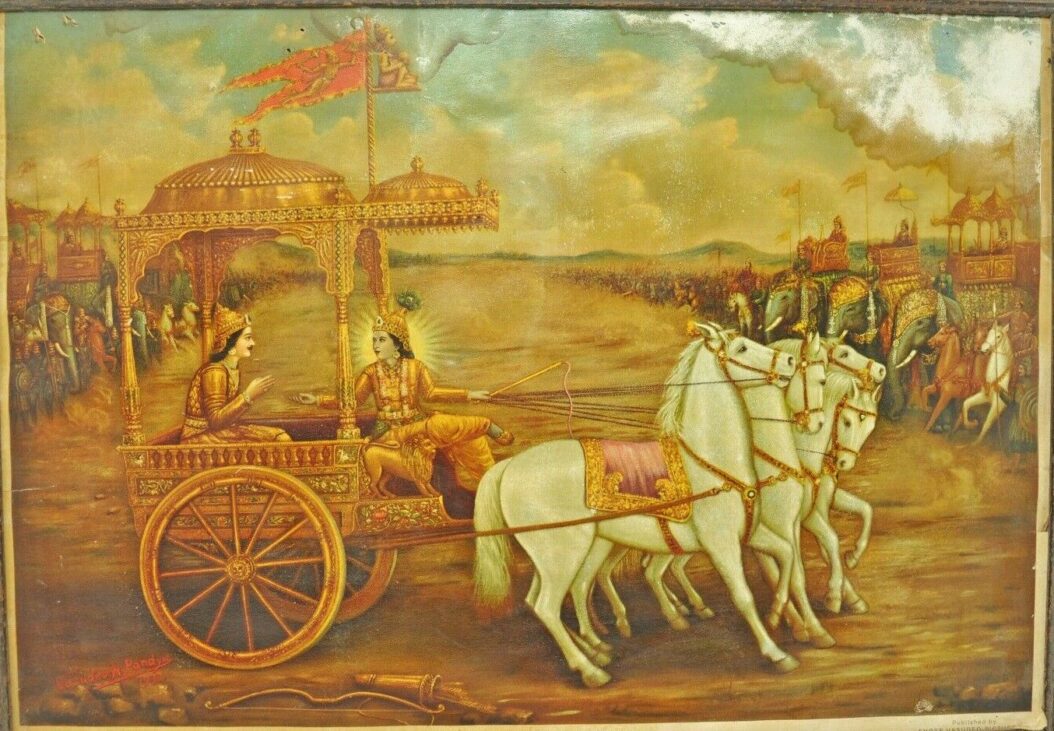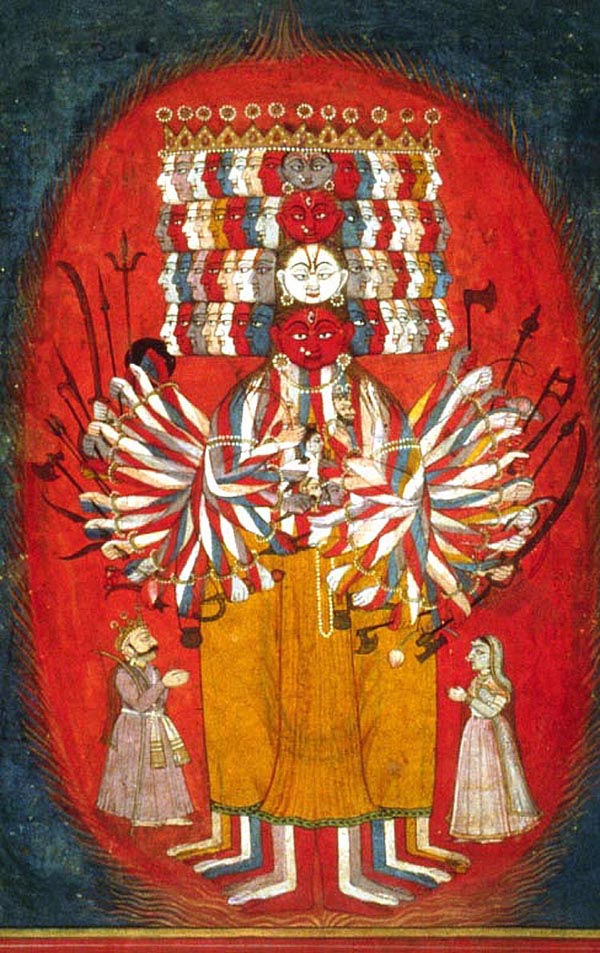
A sacred Indian myth tells us how we can pursue our life goal by action.
Bhagavad Gita which dates back at least 300 years before Christ, is preserved and considered a masterpiece above all Indian doctrines ever since. It is composed of 700-verse epic dialogues between Prince Arjuna and Krishna, Arjuna’s guide and charioteer. The scene takes place on the eve of an expected battle between two huge armies – Pandava brothers and their cousins who have cheated the Pandavas of their rightful kingdom. The Prince, in a state of conflicting morals and emotional despair is unwilling to pursue this battle against his cousins. His charioteer Krishna, reasons why the battle is Arjuna’s ethical obligation. “Wisdom of the decision,” he punctuates “lies in the discernment of the eternal from the transient.”

Krishna speaking gently and wisely to Arjuna represents the face of God. When Arjuna requests to see his truth, Krishna reveals on an instant his supreme being. Arjuna, having seen the glimpse of Divine falls in love and surrenders. In his state of revelation, he abandons doubt, takes refuge in Krishna and ventures to act in devotion.
In the backdrop of war, the dialogue delves into the questions about who we are, our rights and duties, and the higher purpose of life. Krishna marks the necessity of action :
He who acts and does his job in a good way will not be confronted with any negative consequences in this world nor the next… If the person performs his duties well without expecting anything in return, and leaves the outcome with God, he will not be affected by the consequences. Just like the water lily which does not get wet in the water…
In ancient Indian wisdom, the “charioteer” is consciousness, the “horses” are tamed desires, “wheels” are time, the “chariot” is the body, and the owner –“rider” is the self. The real battle is to dominate the “self” in the middle of life and society. Action is necessary to practice self-mastery. Action founded on spiritual knowledge put into practice of everyday life steers the soul to maturity and salvation.
The thoughts are continuous and are like a storm; they are incessantly renewed. They are powerful. To dominate them is harder than dominating the wind.
To attain mental balance – steadiness of mind – attention and action are essential. Spiritual pursuits can be accomplished by action (karma yoga), knowledge (jnana yoga), and devotion (bhakti yoga). They essentially converge and lead the virtuous path of becoming human. One must bring steadiness of mind into action : Yoga is “skill in action.”
The wisdom of yoga philosophy and its application to practical life has endured and spread ever since the sacred myth of Bhagavad Gita.
Duygu Bruce







